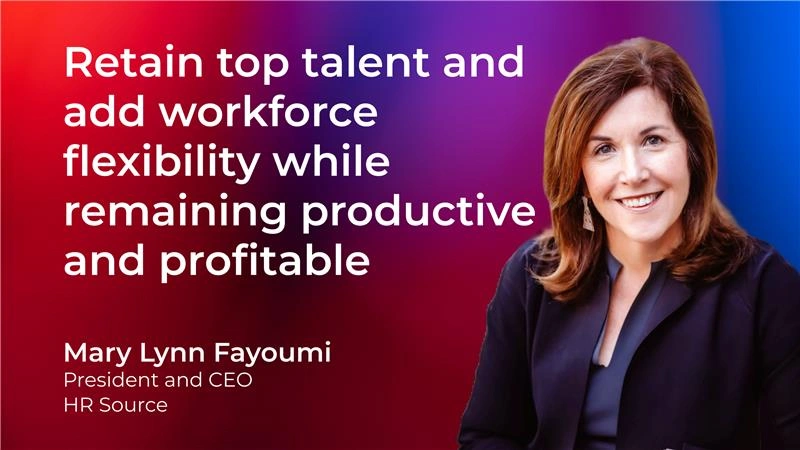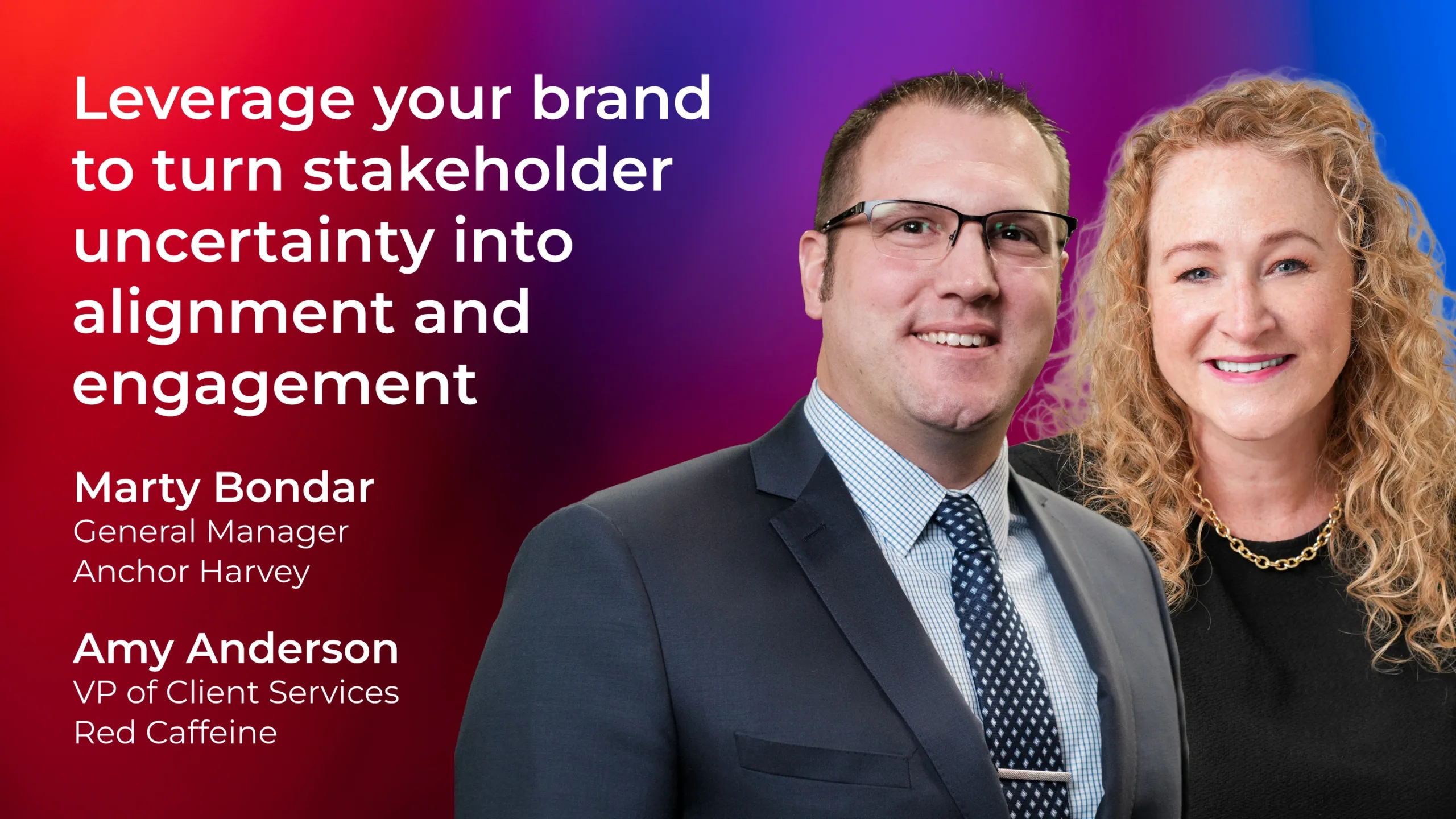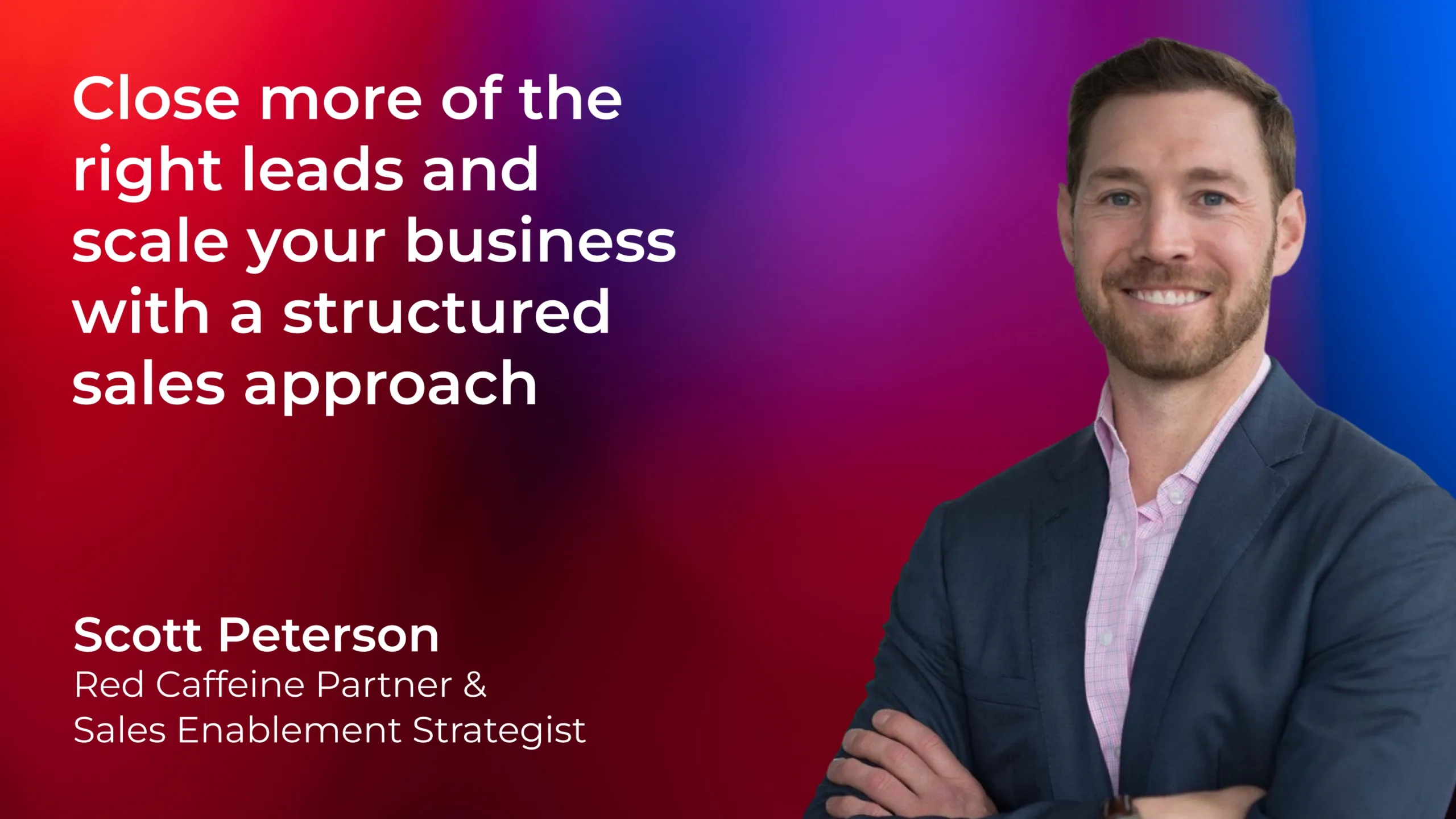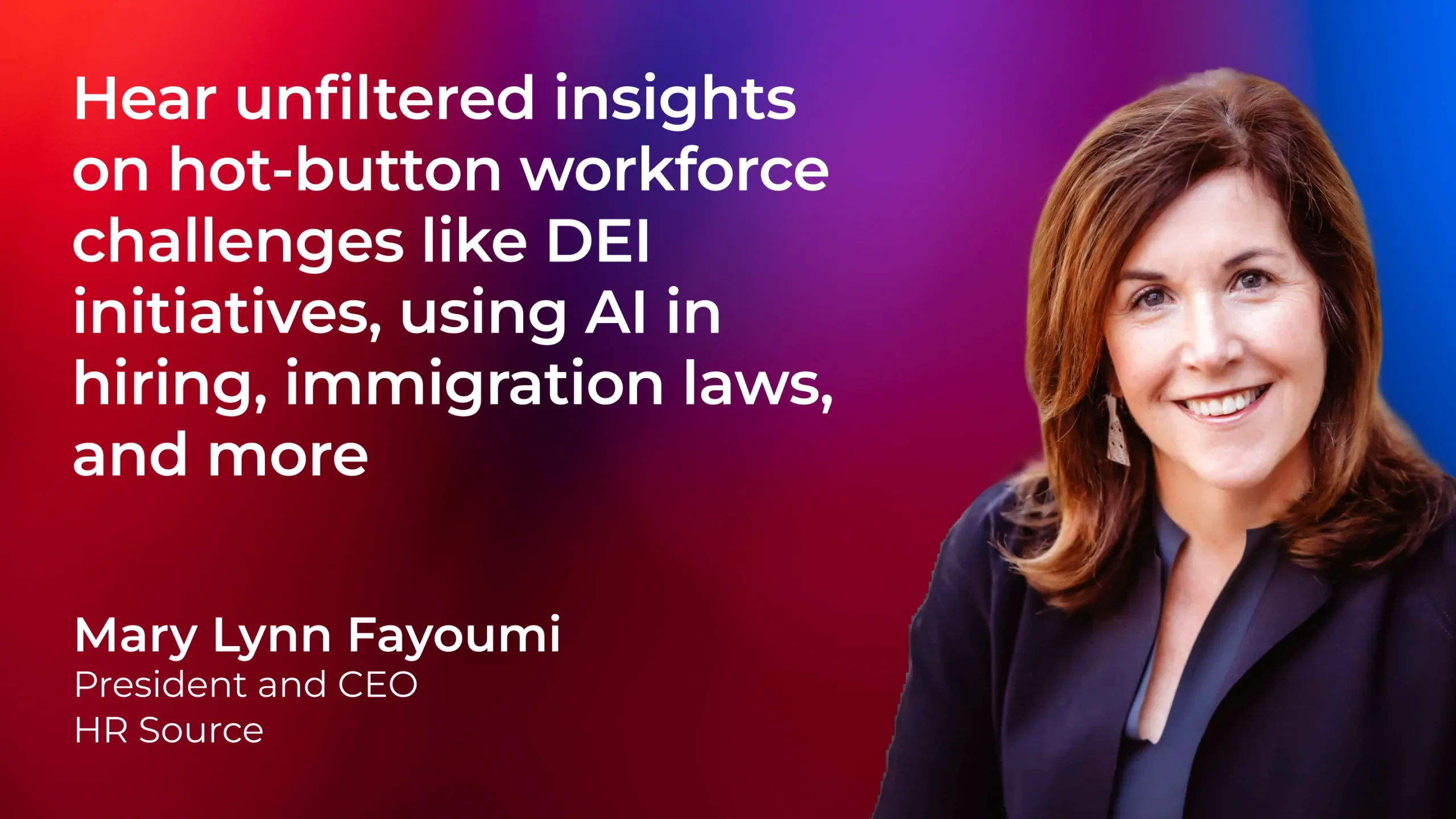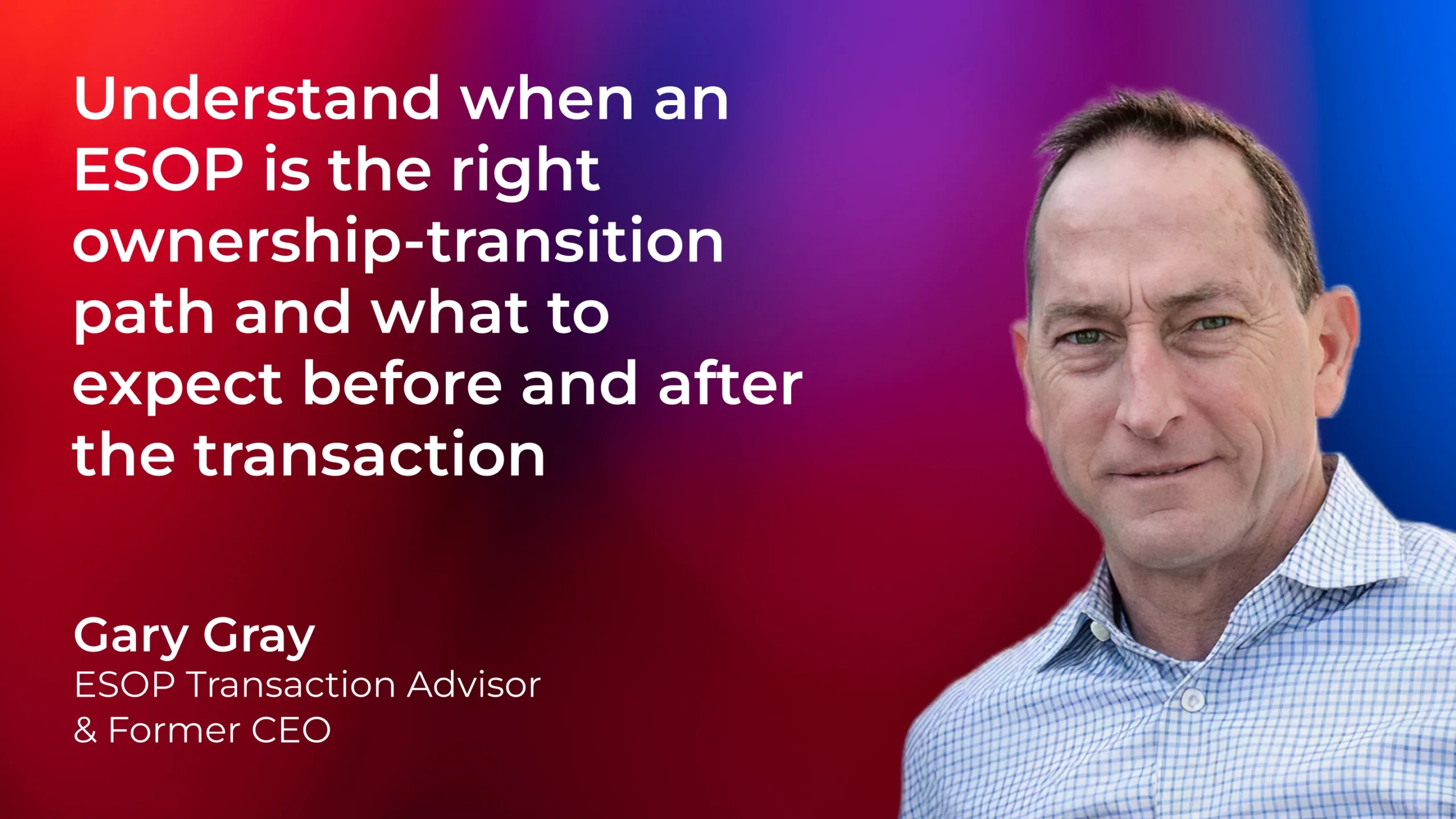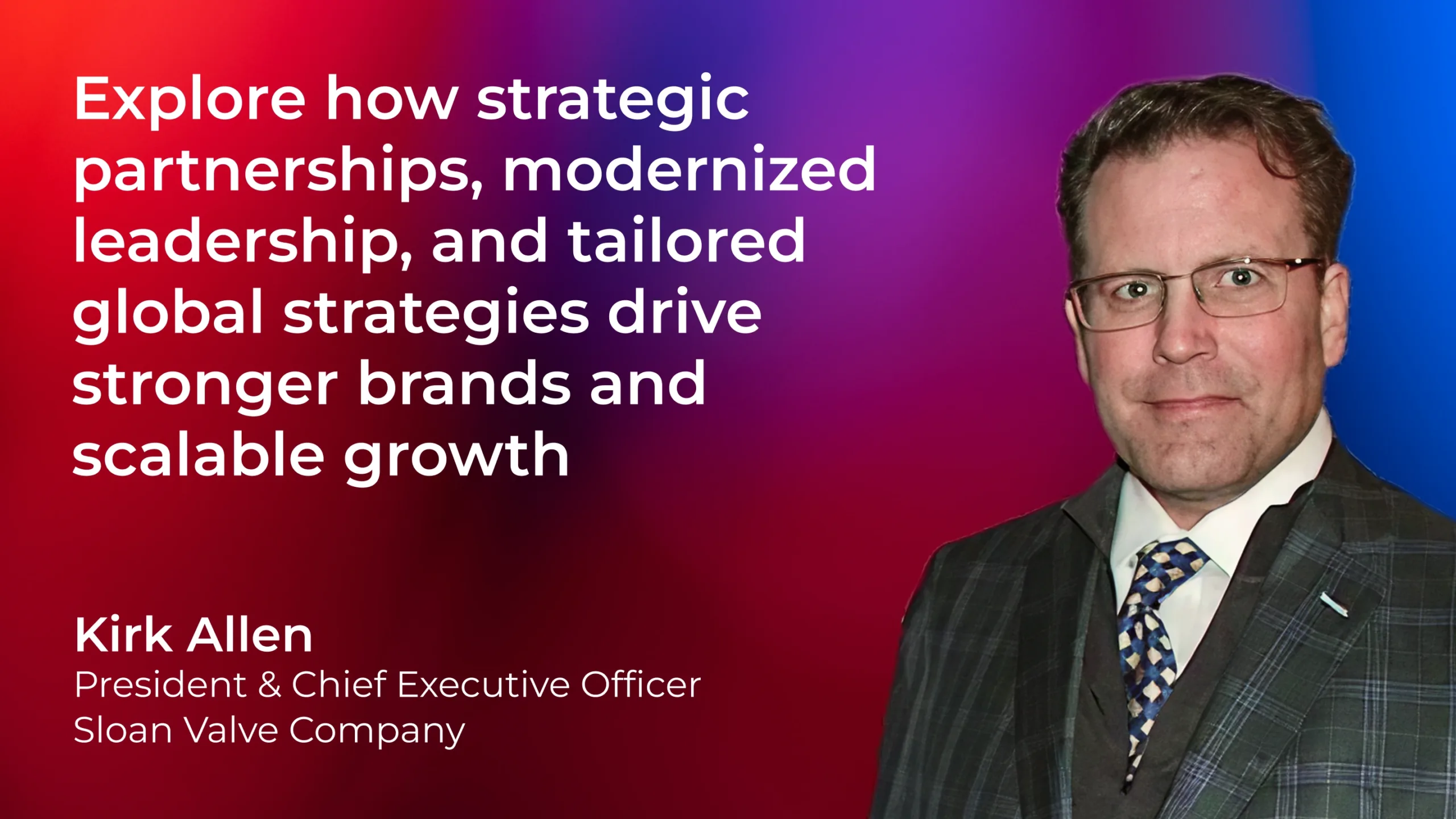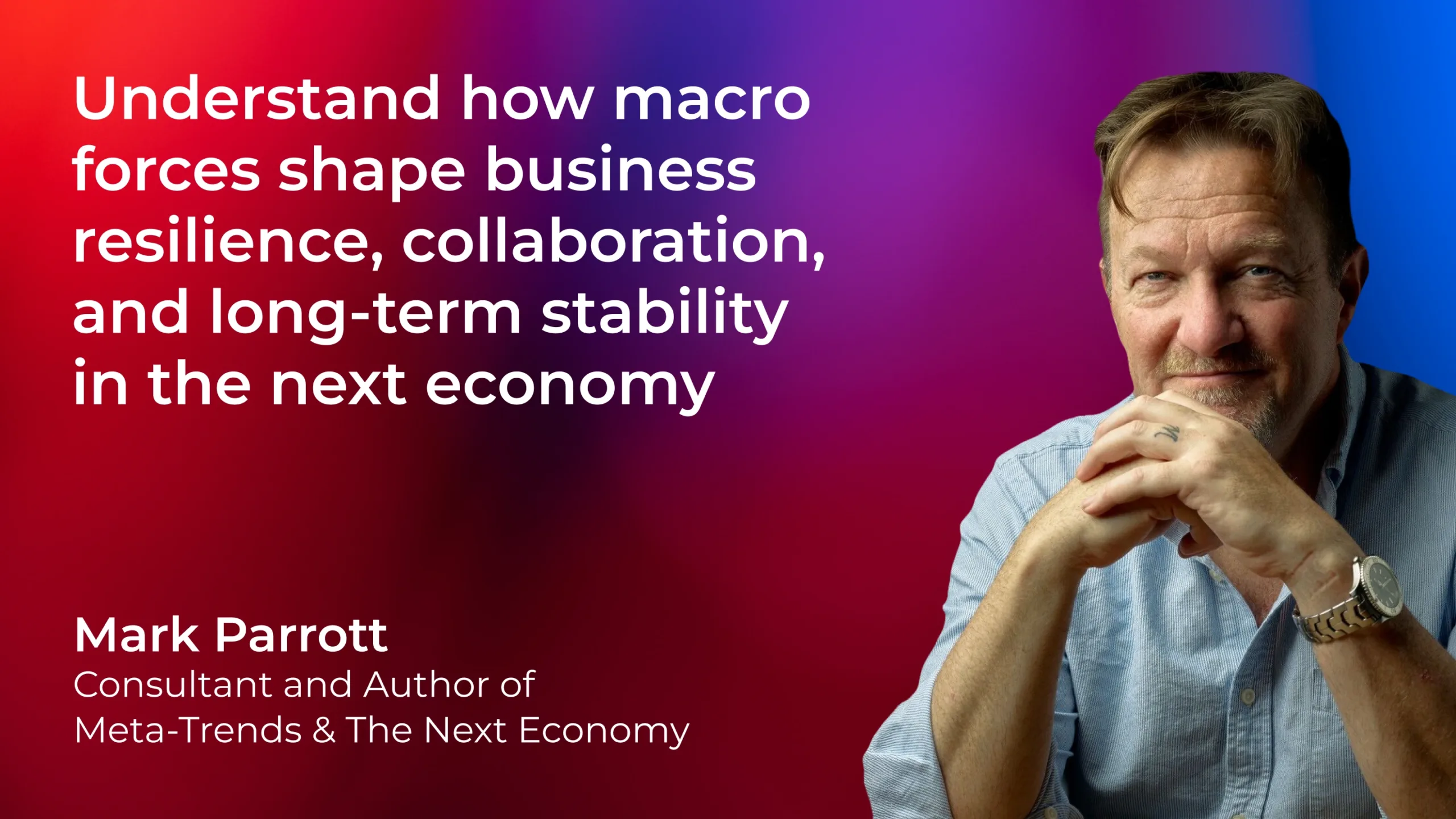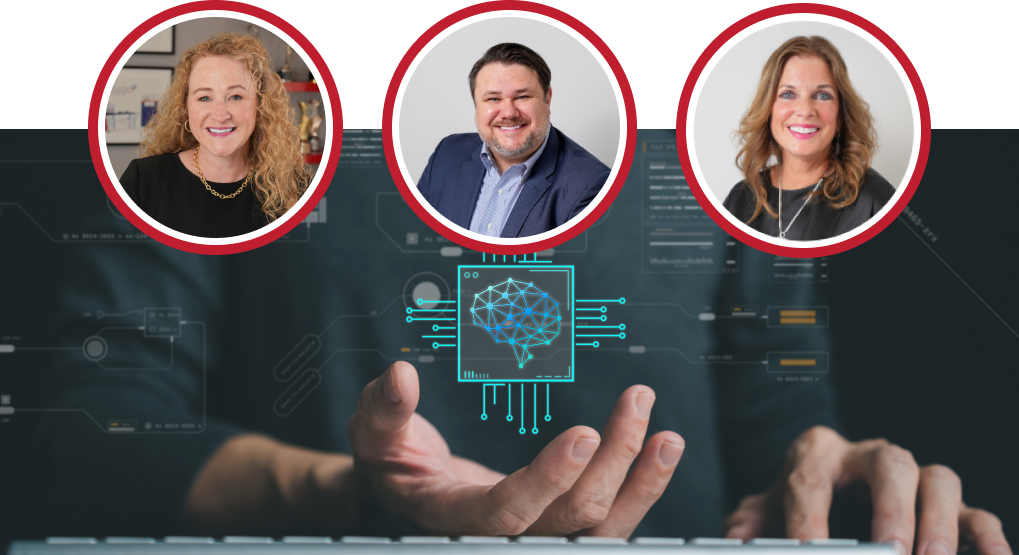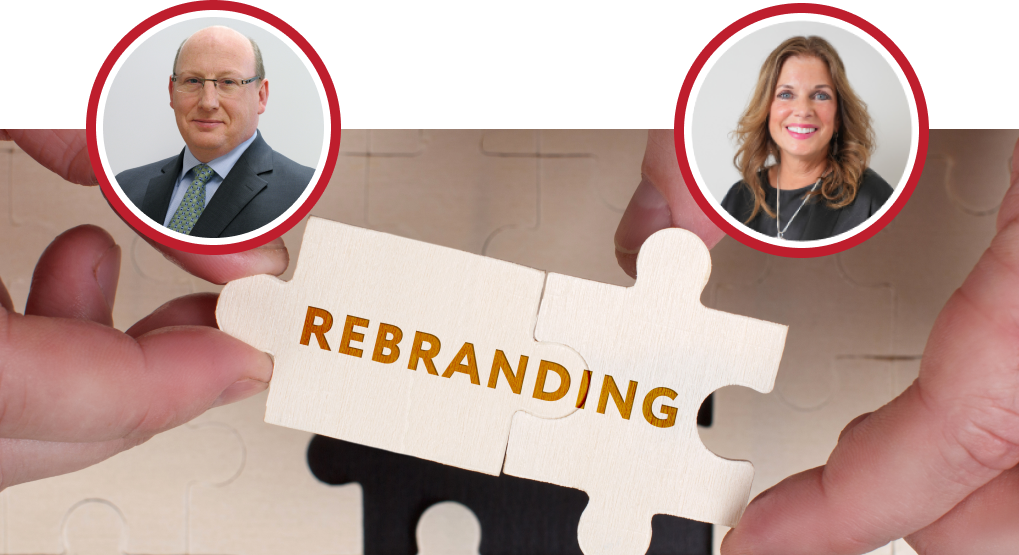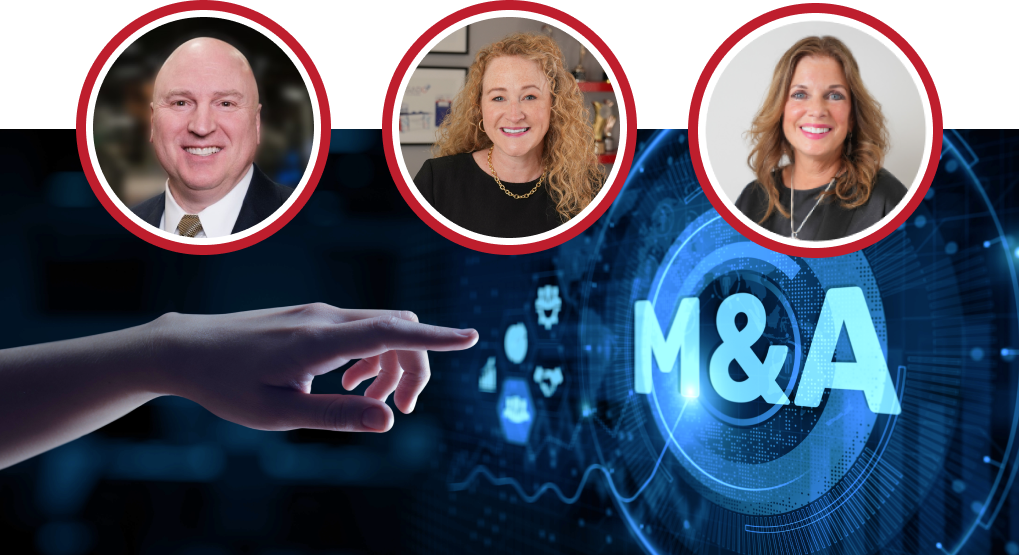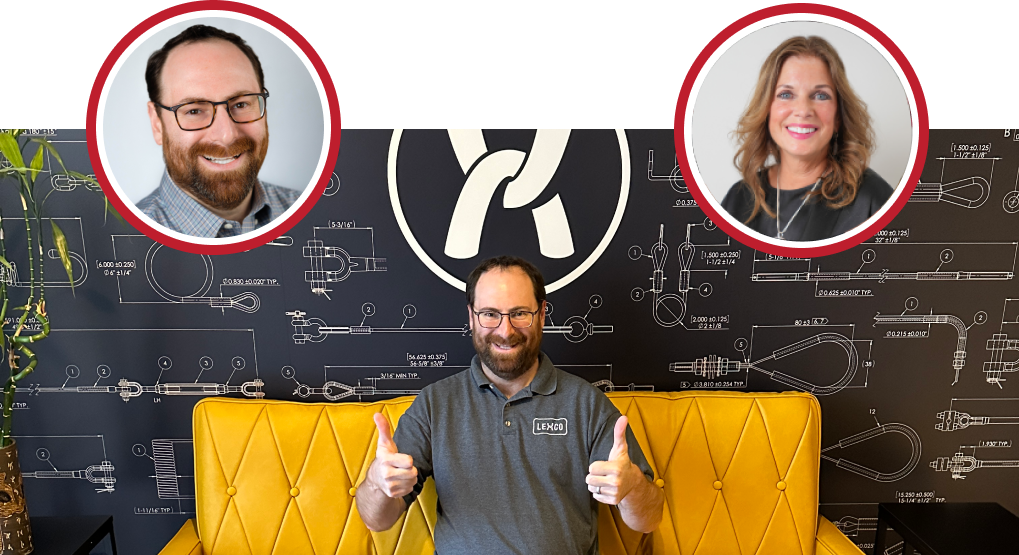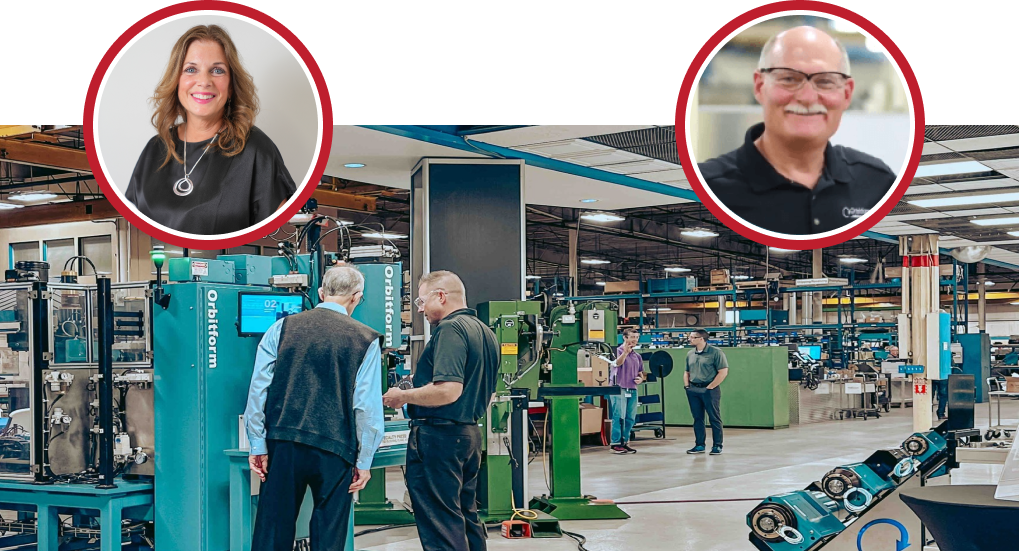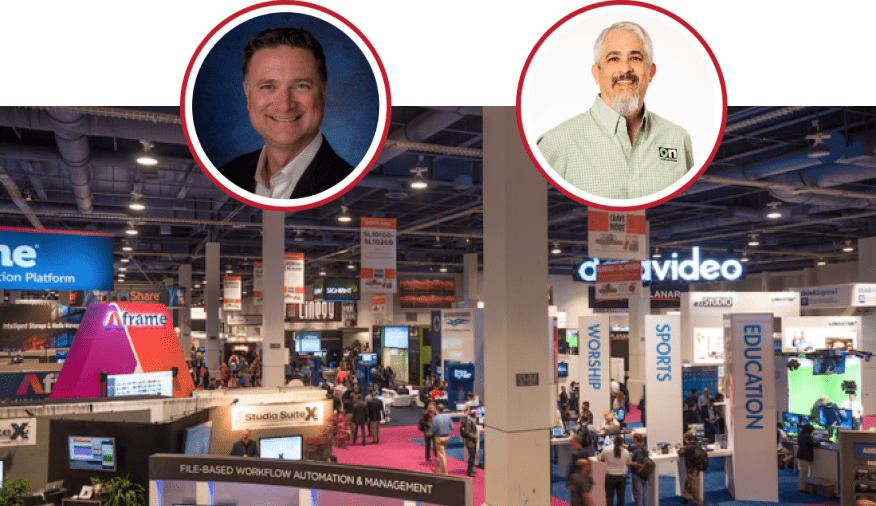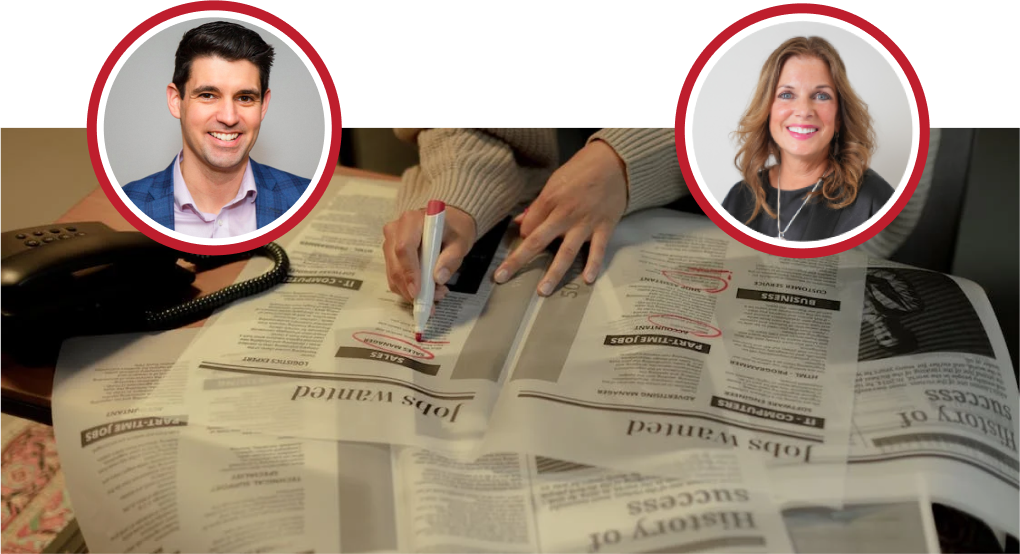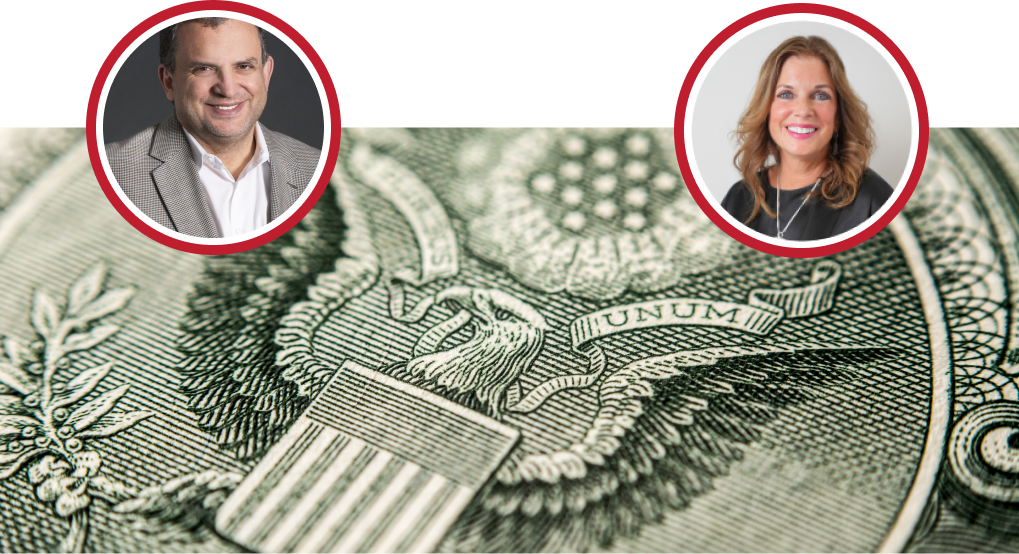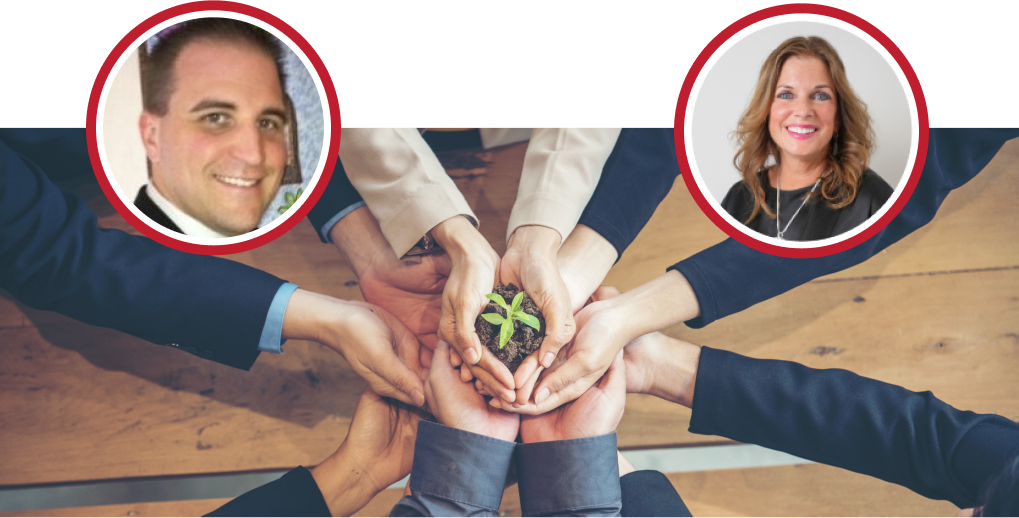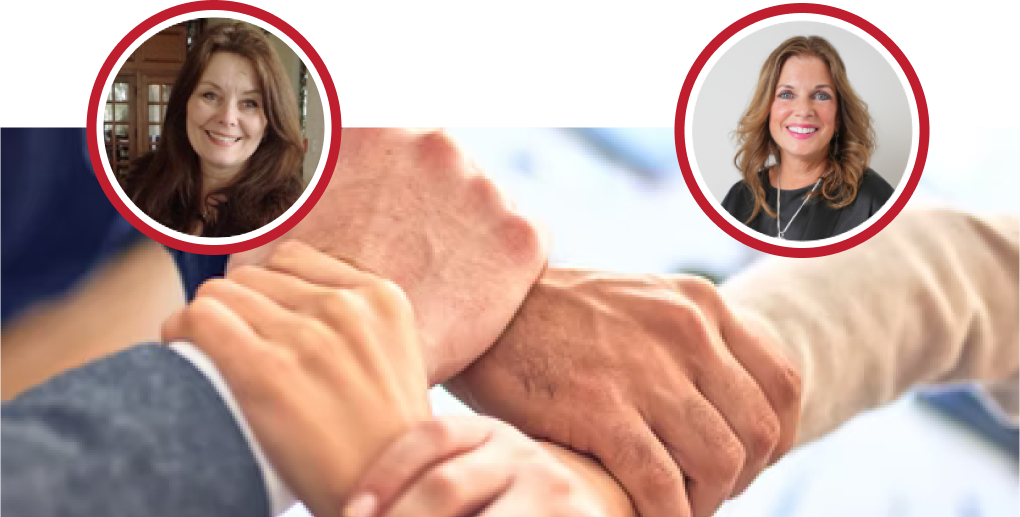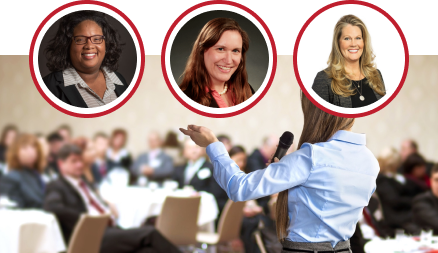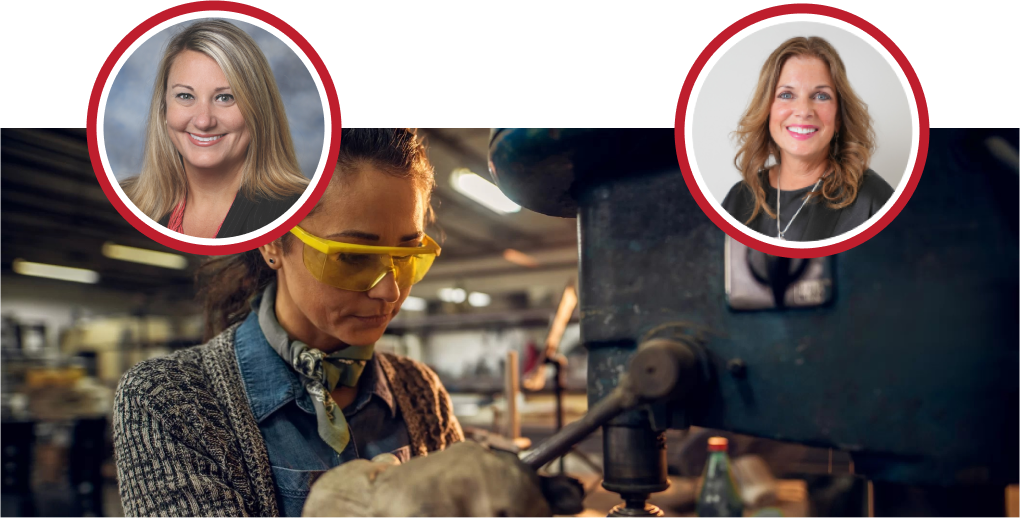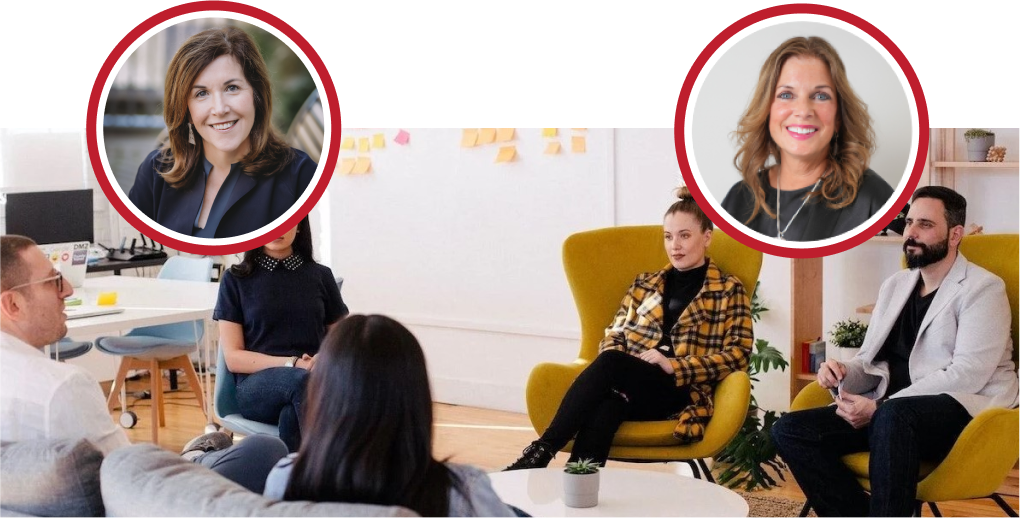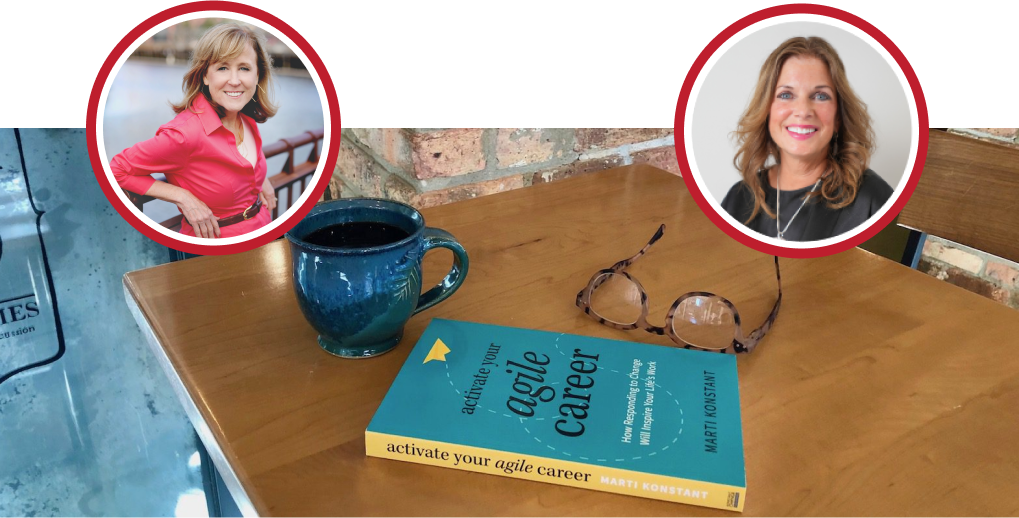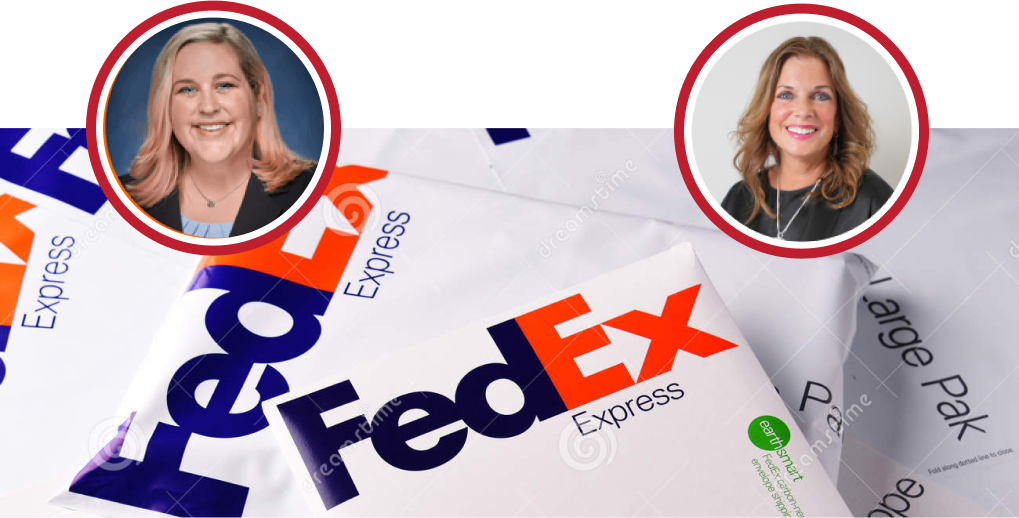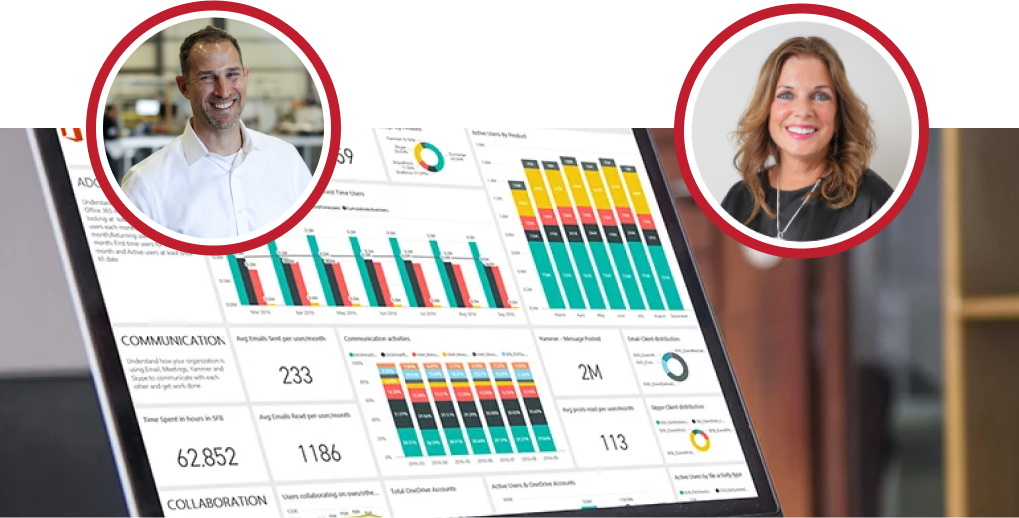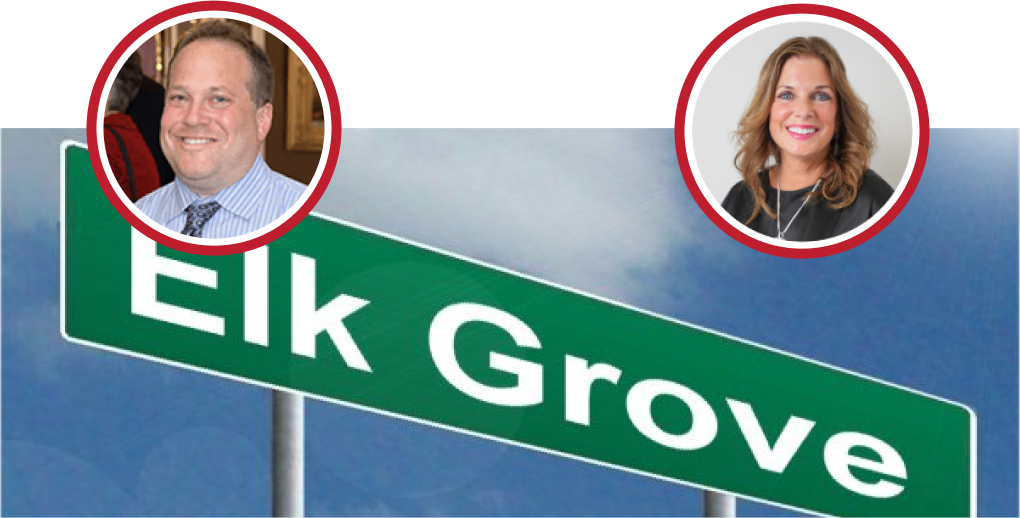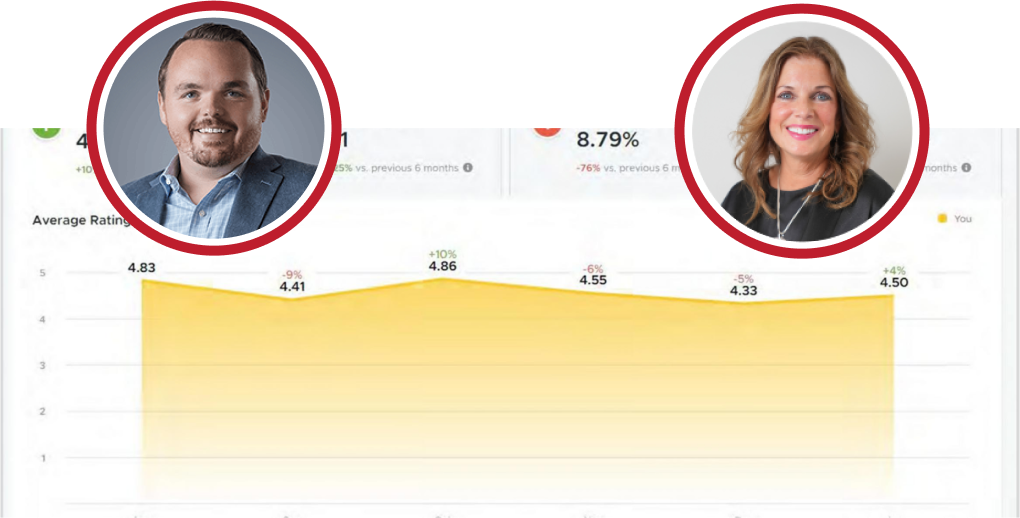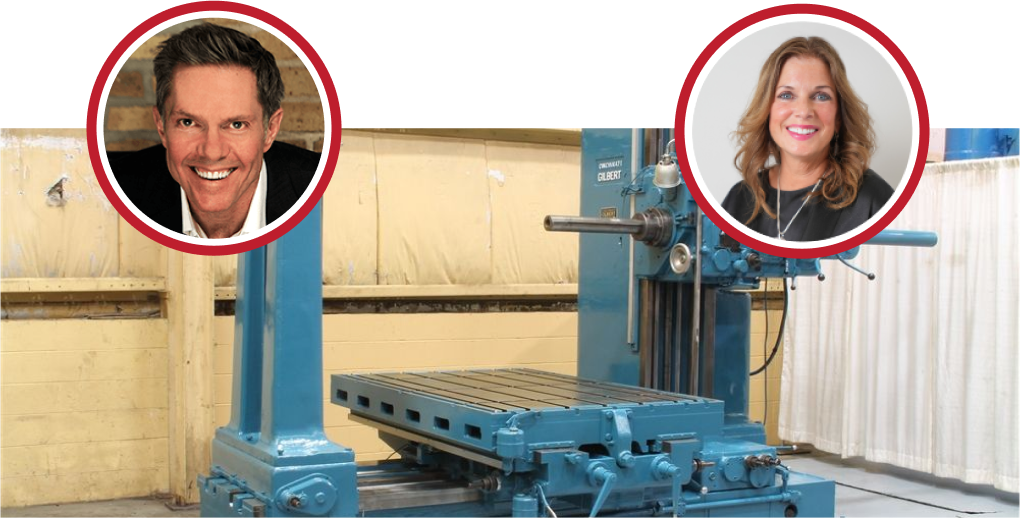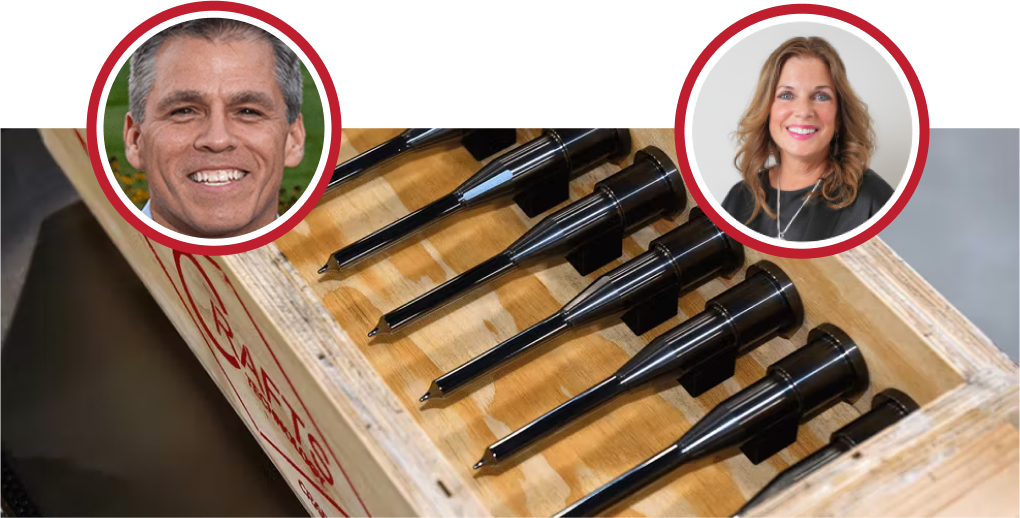Kathy: Welcome everybody I am Kathy Steele and I am your host today at the business as unusual uh webinar for July um we’re super excited to be talking about tech today driving versus drowning really understanding the smart tech platforms that are going to fuel your business growth just a couple of housekeeping items while we’re getting started I wanted to let you know that we will be live streaming on a number of social platforms if you’re not joining us viewing the restream forum um dana welchers will be moderating our LinkedIn um uh session so if you’ve got any questions she will be taking those questions and feeding them into myself and the other speakers today so really excited about this topic we’re going to talk about you know how to decide what technology platforms are going to help you grow your business talking a little bit about making some good tech choices and avoiding some bad ones and then who do you need on your team who is going to be the right people to put within this process so we’re going to get jumping in um you’ll see a new face one of our sponsors Joseph Gurrery’s joining us today and he is from a disparity he’s a certified business performance advisor and joe really helps leaders um to address their business growth goals and accelerate performance um as a performance advisor for Insperity uh its disparity is the original employer organization they’re a Peo and Joe says he acts a little bit like a business therapist with a focus on what keeps keep small business and mid-sized business leaders up at now people process and performance issues so expertise scope encompasses the ABC twos of hr. administration benefits and compliance but the force multiplier is the c that’s culture so welcome joe thank you for joining us and being my co-host today.
Joseph: Pleasure
Kathy: And then i want to introduce our guests on the hot seat um Mike Remke is that one of the co-founders of bonsai Mike has over 15 years’ experience in lean manufacturing and operations management in the aerospace and dispatch defense market he’s a passionate about improving efficiency of business processes and eliminating waste his extensive experience using process failure modes and practical analysis he’s also an award-winning innovator and is a certified six sig six sigma green belt so thank you and welcome Mike and then Matt his co-founder at banzai is an ex-googler of 12 years so Matt served in the retail consumer goods restaurant travel and finance industries for over a decade strategically planning billions in digital marketing investments Matt drove multi-billion realized revenues for his clients well that’s a mouthful um using analytics statistical forecasting auction modeling cloud computing and machine learning so he was a Google’s exclusive digital analytics advisor for 40 plus fortune 500 companies like Procter gamble Coca-Cola Unilever colds and best buy so we’ve got two really smart technologists on the call today um and as well as joe give me a just a quick nugget about what’s not on your bio what should our audience know about you that’s not in your bio.
Joseph: Well, uh, on the fun side of things, I am a semi-professional singer, and I do that when it’s uh sometimes at work, but actually, a couple of us at work are in the same chorus, so that’s fun, uh but then the things that work what I enjoy is just helping business owners explore how they could be better, and you know ninety percent of the time it’s about the people it’s not about uh the process all the time it’s about the people that are there, and then the process and technology enable those excellent people, so I have a lot of fun doing that.
Kathy: Great, thank you for sharing, and I have had the pleasure of hearing you sing. You are fabulous, so we were joking before we got on the call though we might have to have joe break into a song if we get a little off track, so stay tuned could happen. Uh, Mike, what’s not on your bio that people should know about?
Mike: Yeah, I guess you covered a lot of the uh the work info I think outside of work um hobby wise and they uh have a kind of woodworker got three little kids also some uh I’m pretty busy outside of the office.
Kathy: Yeah, that is busy three, so and Matt, same question to you what’s not on the bio?
Matt: Thanks, yeah, thank you for having us, joe and Kathy um, I like Mike, so I have two little kids um out here, and we live in Wheaton, and uh, they keep me pretty busy, I, you know failed at my first professional career in baseball about a lifetime ago so you know if you ever want to hear you know someone told the old you know stories of the cooler days, uh you know I could be that guy so uh really uh just excited to talk with you all today.
Kathy: Well thank you I’m a huge baseball fan so I guess we do share something in common so um we’re going to jump in to one of my favorite topics I think having a functional technology stack is undoubtedly one of the most critical aspects of growth strategies and I think it’s you know we’re all hearing discussion around inflation and recession and tech enablement is in my view one of the most important places to invest in when we are going into leaner recessionary times so i think this is just such a timely opportunity to talk about this so um as we were prepping for this session we discussed how you know both of our organizations really work with um companies that are investing in technology stacks and some organizations are over investing a lot of enterprise organizations have too many are a very bloated tech stack and then other organizations um maybe more mid-market or smaller organizations tend to have not enough tech um in their stack so talk us through like what the macro view of how many business platforms are pretty typical based on the different industries that that um that you guys are working in.
Matt: [Music] sure so yeah I can I can start with this so thanks for bringing up the slide great question Kathy so like you we see the same thing we see there’s a lot of companies that frankly need to up level the technology they use and then you kind of have the opposite problem um we do we actually do research uh in this specific area just to give you some context and you see something on the screen um these are different vertical industries and at bonsai we track I think it’s something corrected over on mic i guess it’s something like around 7000 companies we currently uh survey essentially and uh so the numbers on the screen are sort of the average number of technologies that these companies have essentially in market just to solve business customer and marketing intelligence right from advertising all the way to like you know data and technology on top of that and so you see kind of two columns of numbers there the column on the right is like total tech like all in and then the middle column or sorry the first number there we call it third party technology but what we’re really saying is those are the bits of technology that those companies buy and use on average where the technology essentially is collecting data on uh on the business’s behalf right uh it’s sometimes known sometimes not known but you kind of look through these numbers I think our take away I don’t know if it’s your takeaway but like we see these numbers and we’re you know we know technology is necessary we know you need a lot of tech but at the same time you know there’s a lot of tech here right 20 30 40 platforms depending on the space and our question that we usually start with is like is you know why do you have so many or is this something that’s actually adding value.
Joseph: Well, let me throw you a softball so uh since you have baseball background and uh and let’s just ask a broad question about you know putting it into the words of a business owner or maybe chairman of the board or a board member why they want to get more out of business so why should companies invest in an optimal business technology stack.
Matt: Yeah, it’s a great question. You have to reach customers in a lot of ways, frankly. Technology is how we do that today, right and so do you need to engage uh with new and prospective customers um across many different points and do you need many partners absolutely so I think the idea that you need to have that addressed is fundamental nowadays like you can’t scale a business in many respects without solving how you want to approach tech um so I think that’s sort of the value right and then [Music] I guess I’ll throw the question over to Mike too and your perspective on that same one because it’s so good but um you know knowing you need to solve tech is different than saying that more tech solves everything.
Mike: Yeah and it kind of to your question joe and kind of along the lines of the chart that we’re showing up there’s um you know the part of the effect right of having you know so much tech uh at different companies that are shown in the list there right is it’s not only that you’re probably paying for them um maybe some of the third-party tags that are shown up there maybe those are defunct also you know one thing that we actually see quite a bit is um like for example for a business let’s say you’re um you’ve been using a particular social platform for several years right and over time you know your particular audience kind of like moves away from that platform for whatever it’s you know it’s not as effective anymore um so you shift your spend off that platform but anything that you put on the site tech wise to line up to that social platform those tags are still firing likely and uh the data is going somewhere and it’s also slowing down your site right so um there’s you know implications of you know keeping all too much tech and not really like cleaning as we go um so it’s really important to really be thoughtful about what you pick because you certainly need to invest in technology like Matt said to really drive the business forward um but as that happens we have to make sure we’re sort of looking back at you know what was in place and does any cleanup that you occur you know as you kind of continue down the line otherwise things just keep getting bolted onto the side and it just gets bigger and bigger and oftentimes uh folks aren’t really even aware that it’s you know that this is occurring you know potentially slowing down their site or even sending data to places that they don’t really approve of anymore um which also has implications more recently with CCPA and you know GDPR you know privacy and consent um so there’s implications of that also so it’s a good kind of first place to look and for us in doing this research it’s very kind of telling of how widespread the issue is right because it’s very unlikely that any company is going to need you know 45 third parties to really you know operate their site properly so um it’s a good um kind of barometer for us to you know see where everybody’s at and then we can kind of uh um work from there with uh companies.
Joseph: So there’s a lot of things that an organization has to consider when they’re selecting a technology or a platform or determining how they can tie things together and I’d like you to address those but I’m going to predispose you to the first thing and that is we’re not at the stage yet like the jetsons where artificial intelligence can really run the business for you it’s still people uh using the technology still people interacting with the interface is still people figuring out what good and bad data to put in there and you’re trying to stop people from put bad data in for example so let’s talk about the people impact uh as one of the first things that you consider when an organization looks at it because they could have all the best technology in the world and the most complicated interfaces so they always get terrible data because the humans just can’t keep up with it so maybe start with that as one of the things they should consider and how you all address it and then name a couple of other things that are a real key and do we need to advance the slides or is this a good one to talk on we got this one we got another slide after that that kind of addresses.
Matt: Yeah, okay, wow, we’ll get to that one. Good job.
Joseph: Yeah, so address the people related you know that like you could make the most detailed interface but uh human can’t keep up with it you know there’s that fine line, but then what are some of the other things they should consider, so it’s a broad question.
Matt: Great question we’ll get to like how we think about this in terms of like the steps to success I think what I’ll say off the front though is you know from the very beginning when we have been working with clients as their advisors to optimize what they get from technology and the systems on top of it we’ve called that process team’s first technology design and so like you said that is where it starts and ends and so you know we see very rarely you know once you’ve identified a certain criteria and category of tools you might be able to use a lot of times a lot of different things might work it has the technical requirements you need from there it’s can people use it do they understand it right and how does it fit into the actual teams right and then getting value out of it is absolutely where it’s going to be so we ask in one of our um in uh we do these interviews and surveys as part of sort of our discovery process at bonsai and so we ask teams specifically these things like hey do you have to use tools that you don’t understand and do can you name them and like tell us more about like where that doesn’t line up we do that for a very specific purpose right because to your point though we know that like sometimes fixing a tech stack is about getting a new tool but frankly sometimes it’s about getting the right people informed about how to use it.
Joseph: Right.
Mike: Yep yeah absolutely around the training side of it and really communicating uh changes oftentimes um you know one place to start is really just making sure that teams that work alongside one another truly communicating uh their needs you know whether that’s you know a dating need from this team to this team or some kind of output but really starting uh like that said with you know understanding the um you know needs of the individuals and then how does uh you know company operate within that right now and then helping the tools assist them you know to be more effective because like on the slide here there is no you know nothing is going to do there’s no magic bullet you know it doesn’t matter what your local friendly tech sales person says the next platform uh that you’re pitched is not going to fix everything uh everything is a slow road it should be you know done very slowly deliberately have a good onboarding plan with how you’re gonna you know integrate that tool with your team’s health along the whole way um nothing is just gonna be bolted in and then you know solve all your problems and it’s just never going to happen I think being very mindful of how it’s going to fit into your system whatever that is today whether it’s good or bad is really important and being able to manage the change with the tech and the team you know throughout the entire process is really critical to putting anything in place that’s going to be sustained and successful.
Kathy: Yeah, many of us marketers really hate the word marketing automation. It just is not really indicative of how complicated it is to automate sales, um and you know, enable sales, so definitely love this nothing does it all, so you guys have some thoughts around what to kind of look out for when you’re considering you know the tech stack um you call it your little bs detector so talk us through.
Matt: Okay that think this was inspired by you know a conversation that Mike had at a like a recent uh industry conference or you know I forget how we specifically landed on this list but we’ve actually found it to be it’s really simple and helpful right and so there’s a couple points to call out here um and it’s also fair to say that there can be good services intact that uses some of the things on this list but it’s just sort of like we call it like the things that like listen for and then I would say use it as a cute approach so one is when a like if you are in a conversation being pitched or demoed a platform and the only thing that they can tell you is that a lot of other people have bought it or it’s growing in a certain amount it’s an indication like okay press more about that right so they might have bought for some reason um as you know we’re all in a webinar today about how to think about this to add true business value we all know that like the whole world’s not on this webinar the whole world doesn’t have time to have necessarily solve this and technology can be used um kind of as a stop gap right or like a quick fix in a lot of cases so just because your competitors have adopted a tool doesn’t mean it’s actually helping them so just like be aware of that then you know kind of dollars under management goes along with that um you know the kind of mad lib test at the end around you know machine learning is not the only buzzword out there today but I mean we hear it and see it everywhere now and so I think a good like a real basic thing you can do I remember doing this even recently is someone’s telling you about how their technology or their platform leverages machine learning to solve a problem you know ask them what specifically about machine learning is doing that what models like how is it working right you don’t even need to necessarily understand the answers by the way it’s just a good prompt to kind of see if like is there something there or is this more you know kind of spin on top of something that you know might not have the sizzle underneath um I’m gonna mic your thoughts.
Mike: Yeah and these kind of questions here I think all um really just focus on the point that you know adding isn’t necessarily better right there’s every company has an existing tech stack you know it may not be optimized for what you have right now but you’re likely paying for it and the team that you have is working within it so oftentimes what we find um you know outside of you know adding new tech or being pitched like in this example here is really just understanding what you have in front of you right now and how is that really you know operating and what can you do differently internally to make that successful if kind of after you’ve gone through that process you understand that you definitely have a gap then certainly right then these things um you know you can understand exactly your need get pitched and then these things come into play but um yeah one thing I think is even before you kind of get to this point is really just understanding the landscape of you know what is at your company right now where is the data is it well understood is it all connected the way that it should be to be effective under all your teams right does everyone trust it you know there’s lots of kind of like basic questions to really start with and once you have all uh find a whole potential in it then uh something like this applies but i do like the uh the line about the replace machine learning with magic because there’s we found some uh you know sales material sometimes that uh you know unlike a leave behind it can replace magic and it’s pretty funny actually but it’s good things to pro though for sure because you really want to know um you know you can get pitched to anything but really when like the rubber hits the road and you’re in the midst of implementing a new software you know that that’s really when it matters uh to understand exactly how this is going to work and help you know integrate with your team so really i guess the takeaway from this is really if you are being pitched really challenge whatever um you know is being presented to you ask really pointed very specific questions about how it’s going to fit into your particular business because if you know they’re trying to sell your software they should help you know throughout that implementation process not just give you a login and walk away so really making sure that the onboard process is good is going to be critical to success.
Joseph: Well, I can see from the next slide, uh, your baseball background is also showing itself, so you want to give us an idea of how you want to speak to that, and Kathy, you might have a question in there too.
Kathy: Yeah, go. I’ll let them take this one.
Joseph: Okay.
Matt: Yeah thank you um yeah so fielding your tech team I guess this goes with there’s some questions I saw in the chat around how you pick tools and um there’s a little bit I think that relates to this idea of like okay great you know we know what to look out for we know that more tech isn’t always the answer but we know that we need multiple tools to see success so like how do we decide what to start with our big thing is here like the analogy of a baseball team I guess on a simple level right like you got nine players on a baseball team and they do different things right like a pitcher throws the ball from the mound the catcher catches it the other fielders you know do their work you know play in their position and in the same way technology um you know each tool that you could conceivably take on has a specific purpose like getting back together slide like it isn’t magic there are actual real important technological things that these tools are providing but they do a specific thing and so knowing and understanding that they’re like because that is that’s a real thing like some tools are great for reaching customers online some are great at collecting data some are greater visualizing data some are great at managing your customers you know messages and orchestration like these all are different things and so the first step is sort of just understanding that right and acknowledging that like you’re about to possibly add a tool to your tool belt it might be something that’s perfect to help your business grow and succeed but like is that uh does it fit on the field right is or do you have like 10 players right who are already pitching or do you already have like four short stops right and so understand that like just one more all-star of the list isn’t necessarily going to make your team better that’s how you should think about like understanding first and foremost how to think about your tech as a unified group.
Mike: Yeah and one thing to kind of add on to that is with the platforms um that kind of continually come out uh they’ll advertise themselves as you know probably several of the things that you see on the screen and oftentimes they can play that role so it’s not a problem in the end right if you know just in this example we have nine players right but uh six could be the right fit for your business as long as you have the proper um sort of functions covered with the different platforms there’s absolutely nothing wrong with that at all we just want to really be mindful that there is an overlap especially in something like a data warehouse right where you don’t want to have three data warehouses and you know be paying for them one is a problem but then also you know in when you’re trying to unify the data to move the needle for the business if you have data in three different spots that’s uh you know needs to be addressed right there should only be one of those uh definitely um but there’s other uh other different sort of positions on the screen here that um you can have a you know kind of a joined tool that sort of covers two things for the visit two or three things for the business but you just need to really step back to evaluate those um and what function are they really playing in getting the feedback of the practitioners in your business who really know how it’s being used day to day is critical to really understanding that um you can’t just take it for face value that you know this software says it does this so this is what we use it for that likely it is not the case when you really dig into the details you may be using it for a lot more or a lot less than um sort of what it’s advertised for and just understanding that before you make your next move is uh really important.
Matt: I can’t help myself. I guess my baseball in me has got to say. I guess another extension of the analogy is right like, uh if you take you to know in baseball if you take your catcher and try to put them at the picture, it’s not gonna work out too well or if you take a short stop and put them in, you know first base like might not do the right thing it’s gonna be the same thing with your technology right just because someone said they could do it all you know if you’re talking like a tool that’s the best fit is your business CRM and then trying to run all your ads through it might not be great or if your data warehouse is trying to do your visualization and that’s not what it’s really great at you know the same idea.
Kathy: Yeah, I think that you know I love this topic because when we talk about any type of investment in this direction, we’re really thinking about the entire process, so we’re thinking about like a revenue generation system um people uh tools technology process and then talent system in the same way, so you’re really thinking about the overall system you’re trying to build that is inclusive of technology, and people is there a formula that you guys are using to kind of evaluate um or do you think about people first, or the process first do you how do you kind of before you field your team like how do you a road map that system that you’re trying to build.
Mike: Yeah for our engagements we normally uh start kind of exactly because I will draw a map um and it’s a very uh very interactive process with you know with all the leaders and practitioners within the business to you know draw the boxes connect the dots and really understand what data is going you know from this platform to this one is this actually going out to the audiences that you want is it actually flowing into the data warehouse the way that you thought it is right and really walking through every single piece of tech that people are using today uh whether they’re actively used or not sort of irrelevant right if it’s part of the current system we map out the entire thing to really get a uh a common language I think is really important uh with anyone that we’re working with to you can always rattle off the names of companies that you’re using until you really see you know on a page exactly how they interact uh in you know day to day and how the data connects until you see that um it’s hard to understand really where the gaps are so that’s the first thing that we’ll do um to really just kind of set the scene for uh what to do next and oftentimes just from that map you can really see some uh big gaps or you know duplication of effort over here or you know uh you know places where you can connect a lot of the data to make a big difference.
Matt: Plus one to that, and then I think the paired thing we do is when we look at our tools like the expertise we try to bring in bonsai is we call it fitness for use in terms of how we evaluate but be very like declarative and specific like this tool can do this right so that when we’re looking at that map if we hear from a team hey well I’m trying to get my marketing ROI from this data point and we’re like okay well like that data cannot give you that right there’s a gap right and so sometimes it’s solved with an attacker a different integration but those like understanding what each data the set essentially from each tool like what it can and can’t do it’s huge for us because then that helps us not just from the perspective of showing how they know like
Mike said when we map it, you can see big gaps. Still, when we see, there’s an uh a problem where someone’s trying to use data to do something he can’t do that there’s a huge that we see a lot of opportunities there to say like there’s an easy place right help the lives of the teams using it help the organization right get better answers and a lot of times it happens um with you know pretty simple steps right either you know lift and replace or just reconnect in a different way.
Kathy: Right, well, I’m going to circle back to a question as we’re kind of talking about building your tech team. We got a question from, um, the audience around how do you handle the fact that people have preferences like a preference around using certain technologies um when you’re thinking about uh just picking the right technology like how do you handle that influencer that wants their favorite tech um to be uh utilized.
Matt: I have two thoughts Mike love yours too um so we’re really proud to be agnostic and what we mean by that is again I don’t think it’s not that common where we’re working with an organization and here’s this challenge the marketing or business intelligence or other team has and we take a look at and say hey you know guys this tool just doesn’t work they need to buy something completely different I mean it happens but it’s far less frequent than you think and so those preferences really matter when we evaluate right because there’s a lot of um like shared organizational history there like people like are going to be better at using tools that they prefer and understand and can activate and like work huge on that and so for the most part we try to lean into that there are times when the tool that people prefer to use doesn’t have the answer that they thought and then those are the challenging conversations so we try to have those conversations very specifically and say it’s not about taking this tool away it’s helping you utilize what you can and can’t get out of it if that makes sense.
Mike: You know there’s certainly personal preferences right around using tools, but if it’s the choice between you know a or b um, and you know you within your organization, you kind of have some that prefer a. Some b then you know the next uh common denominator is what data is it providing you know what answers is it providing and then is it really just you know training and sort of like comfort in becoming um familiar with the other tool right because once the barrier sort of is removed on why this other tool is actually the better one to use, and that’s really understood by the team uh I think the preference you know the priority of preference will kind of move down right when they see the value right of using this tool over this one even if they’re more comfortable that’s something that over time right they can be trained on and when they see the value in using it which become very easy or easier to move to.
Matt: Another interesting dynamic that we say is it’s funny well teams won’t even know this until we go through this process with them but a lot of times the tools that the people on the teams like to use are the right ones and the ones they don’t like to use are the wrong ones and they don’t even know like it’s rooted in the fact that it’s not helping them and so um a lot of times just simplifying this you realize people end up working with the things that they like the whole time like oh this is great I only need to work with this tool now I don’t have to remember these other ones but like this process helps illuminate it because again like going back sometimes in an organization a few years you know what’s their perception of things well they thought these five things magically answered everything so of course they would need to understand them and they think that the problem is like their faults or their team’s inability to use it when really the fault is just they didn’t need to be doing it at all in the first place.
Kathy: Yeah, you know what, I do think that adoption implementation is just like mission-critical pieces of the puzzle, and I know like when is it right to start to look for an alternate solution is you know to do that sort of factor this just came up yesterday for us you know we’ve got a tool it’s working for the client, but it doesn’t do everything we’d like it to do in this next phase of what we need so now we’re talking about creating some workarounds so we can stay in a tool like how do you address those types of questions and challenges.
Mike: And the workaround is kind of tricky because if there’s you know value the value being provided by the current tool and you can do the calculus to say you know if I add this tool and get this feature this is the business impact if that isn’t you know too great um sticking with the current tool that you have you know is fine but then once you start adding in workarounds um one of the terms that we use a lot is around as using data factories right which is the thought of um sort of basically manual manipulation of data on a day-to-day basis to sort of you know assist you through your day right you get this report every morning but then you go in and you run your macro and then you color these fields and you change that cell every day and then that’s your number right that extra work that you do you know on the side of what comes out of a platform um is a risk right it’s a risk to your business it takes up a bunch of time and when you kind of build on those sort of work arounds over time and then your business relies on those it’s something that isn’t as stable really um so it can have some errors in it and plus it takes up more or more time so something to just be mindful of um in making that decision of do we stay or do we move to this tool is you know how many workarounds do you need to make to sort of fill that function on the other platform and taking that risk into account um you know before you do the transition um and then if you are going to make the transition i think it’s just really important to communicate uh what is changing and why with the entire team and bring them along throughout the entire process um you never want to have you know a tech change communicated you know via email or hey here’s your new login for your system right that that is not going to work for anybody or the business so making sure that all the key stakeholders practitioners that are involved with the particular tool are there from the beginning because they’ll be able to you know root out a lot of the problems of the transition too.
Joseph: Well, guys, let’s talk about uh, the people part of it again uh I can’t help it, but I’ve got to go back to that, and you won’t be able to help it by using a roster terminology and sticking with that baseball diamond so um tell us what the things to consider as you’re building the roster and let’s go on to the next slide all right so go ahead and knock.
Mike: Sure.
Joseph: People need to go ahead.
Mike: So I guess for uh just quickly the graphic in the middle I did not make uh thank you Instagram for this I love I love this graphic I found this a long time ago um but I guess around the uh the decision you know for tech one thing I think that um comes up very often it’s sort of human nature especially if you’re involved with a business you know for a long time right you’ve worked somewhere for a while you know how it works uh assumptions can be made uh around you know how the business should work uh and that’s something that uh to be very mindful of when um you know you’re kind of moving forward with any strategy or with a technology selection is that you’re really trying to get to the wisdom piece and not the sort of conspiracy piece uh which is really taking whatever information you have currently in the business and then when you apply your own sort of gut and maybe some theory to it um you get more in the conspiracy camp um really wanting to move from um you know the data information knowledge insight to the wisdom piece and not going past that so any of the um you know decisions that are going to be made need to drive business results using data with the help of people informing that um but they really need to work together it’s a really important piece to this.
Matt: And then we have like the build verse buy kind of call out here and you know in terms of roster decisions you know agency versus in-house I think you know there’s a lot of aspects of the value the sales and marketing and outcomes value that can be handled by a company’s team internally or they can be outsourced to partners I think um you can think about tech the same way like building and buying right so sometimes it might make sense to have your own custom tool for customer relationship management sometimes you just go buy you know home spot or sales course right like these are those are the questions that I think every business as they’re tackling this is probably thinking about in terms of you know what to do I think you know I guess I’ll share like a quick story from like a uh engagement where we’re in a few weeks ago where we you know we kind of helped a client of ours answer this question a fairly decent-sized retailer and I think like the analysis showed for them that it’s I think the same thing we’re going to see it for a lot of companies as they’re deciding which to do you know in the short term some of the things that they might want to do could be cost them a little bit more money up front but they get a lot further faster you know by outsourcing so there’s certain things that they don’t have in-house so certain agencies or partners that they can bring in quickly and they can get a ton of expertise across a lot of things they need pair them with the right tools and get their you know kind of like what’s the fastest path to growth right and then but the same analysis the exact same analysis showed pretty I mean it’s pretty clear that if they decided to invest if they wanted to think about solving this over the course of years and not months there’s no question they could make more money in housing it would be more expensive it would take them longer but when you look at the three-year model or you look at like kind of where this could net to there’s just a big difference in value and so for them it’s more of like there isn’t a wrong answer right that’s the key thing it’s understanding that these are your decisions right and then it’s gonna be up to the leaders the board room the c level you know whoever right to decide what’s the priority right now and you know we you can only influence that so much from our position or from a technologist position but I would say like those are the decisions right if you understand that you’re building for the long game and you can invest in that regard there’s a lot of things that you can build and house and buy you know put internally that’s going to be lasting value not everyone can do that all the time you need to move quicker sometimes buying a tool is better sometimes leveraging a partner agency will help you get out the door these are just the realities of every situation every timeline is different every economic situation is different but we see these things all the time and that this continues to play out in this way.
Kathy: Yeah I mean I agree I think we see this similar situations where you know where are people going to be placing their investment bets and you know there’s so many factors especially with even the access to talent um so to build in-house and wait and do that kind of slow build is sometimes you know super challenging I also feel like I’m seeing less investment in custom technology than I did maybe even seven eight years ago where people are not investing in building their own tech because there’s so many choices out of the box so how do we you know choose something out of the box might not be perfect but you know with a good adoption plan we’re making it really work well for our business I we’re getting some great questions from the audience but I do want to kind of circle back to you know making sure we talk through sort of um you know how do we get started I you know for us when we’re thinking about helping a client build their technology remote roadmap we’re starting with a gap analysis but can you guys take us through the process that you use for helping a company get started and then I’d love to follow up with some of our great questions that we’re getting from our guests.
Matt: Definitely I think we’ve got a quick kind of headline slide on the next one to kind of talk about this at a high level we there’s these are five steps um you know I think from our perspective we really do think it kind of can be really well understood by just focusing on these kind of five simple things to start um you know evaluating what you have under the hood already is huge we see this step skip so much we never you know like we I’m sure our clients find us a little annoying at first we ask us so many questions about what’s already there it’s so critical because it helps guide the rest of it um second you’ll see you know joe you’ll be happy to see that like teams is like right near the top right you know if you trust me we’d start there if you didn’t have to also figure out like the tech that you have under contract and what’s so funny and you guys probably can relate is I can’t think of a single enterprise we’ve worked with where the company itself knew exactly what they owned there’s always something they weren’t aware that they’re paying for um well we stopped using that five years ago right oh interesting right so it’s one it’s almost like a you know kind of like one and one a but then fitness for use we talked a little bit about what does this thing actually do how could it be used how are you using it does that align then going back to the lineup idea like if we think about this from like where should things orchestrated integrate like are you there yet or do you got gaps and then finally great we have a new plan or we have like a path forward we got to simplify we got to socialize we got to change manage right then it’s gonna be putting in the work to making it happen um I guess those are the steps.
Kathy: Yeah, do you want to talk us through a little bit more detail
Matt: Oh yeah, for sure, um, do we want to? We might have a couple of examples of each one of these we want to.
Kathy: I’d love that.
Matt: Yeah, so I guess Mike, you can chime in on this one too. I mean, this is basically some logos with some common technology at the top. Then at the bottom, there’s some common like actual types of technology in the marketing and business intelligence space, so uh, it’s a pretty simple diagram, right but um one is like what do we own and what is it like that’s a huge thing like is this an ad platform or is this my CDP or is this doing data warehousing like what is this.
Mike: Yeah and thinking through exactly right and thinking through something we mentioned before about uh as part of the interviewing and sort of discovery process with the teams uh oftentimes you know there might already be one person at your company who actually knows that answer and they may or may not be the owner of that platform right um so really it’s really important especially in larger organizations to really um talk with everybody that’s involved with these um to kind of understand the nuances of how this works with this and we actually use this for these two functions and until you understand that in your kind of current state it’s sort of difficult to move forward or you’re moving forward and might not have the full picture um another thing that as you’re just talking on the previous slide Matt I was thinking of ownership too one thing that we find that oftentimes isn’t clear is you know who is the owner of this data at the company you know who’s the person to go to you know for even access right or uh who understands um you know the uh entire uh relationship with that particular provider you know that there I think things like that are often not well understood especially if the tech was brought in a while ago um you know people might have permissions to use it day in and day out but truly who’s the admin of all these things and can you contact them right away if you need to get access or make a change or find something wrong so setting a you know kind of a racy chart if you will right for like roles and responsibilities for each of these platforms is also really important to understand who to go to something we see as a gap.
Kathy: This might be a good time to ask the audience the question around where people go to uh to help train people on a particular technology platform.
Matt: That’s a great question yeah I mean definitely gets into the second part of like this process around on teams I think you know the answer is going to be uh dependent on where the team’s at today and what you want them to do with this technology right so you know you’ve got um practitioner level understanding which is deep and required for like if hey this the lifeblood of the company’s required this person to use it there’s one level of training there’s another level of training that might be hey you know I don’t need to know how to do everything here but I didn’t understand what it’s telling me right so um we use I mean this is probably not again unique um even at bonsai internally right we use uh different scaled resources depending on the training needs so sometimes like we’re you know we we’ve got Coursera Udemy um there’s other like let’s just call them like if you want to get the understanding of something at a broad level um those can be great places um but yeah like sometimes there’s gonna be a need for you know a firm to come in either the partners who work at the tech platform themselves sometimes have specialists or you know you can work with vendors to kind of do hands-on in-person training I think once the leadership understands what exactly they want to get out of their team and how deep they need to go it’s clear and I think if you invest in that you consider that part of the cost of onboarding and bringing something on you’re going to be very happy because then you’re going to get a lot of that upfront value the survey your team’s thing here too is sort of the paired thing with that which is um not just you know we do ask around how people’s comfortability and what they prefer um you know another question that we feel like we’re asking all the time that we don’t hear asked enough um like in our surveys we’ll just say you know do you trust the data you use to make your last decision and then like that question across lots of parts of a company and like this is a you know kind of a little bleak funny example but like this is sometimes the answers we get back right and so in the cases where it’s like I don’t trust the data that can be a training thing sometimes it can be underlying issues though right and so we think that it’s another important component to understand where to start.
Kathy: Yeah, I absolutely agree. I think you know a lot of people are afraid that they just don’t even have the data, so you know, it’s like that’s a barrier to getting started. What about the fitness-for-use piece?
Matt: Yeah great um great question so we uh and you know Mike can share more i think in terms of how this like plays out on individual platforms I think just when I speaking at this at a high level we’re we think about this in kind of three buckets of the kind of questions right so you have all these tech platforms um under hood and so it’s really important to know and this is where i guess we’re like kind of special expertise can be a big help for a business is you know what is that data that that tool is actually collecting or generating right and so that can be advertising data that can be collecting third-party you know data on your customers that can be business and sales or communications or you know event data or all kinds of things but like you know being very specific what is it and then is that data useful for what you’re doing you know using it for right or you know does it help you reach prospective customers can it help you track behavior can it help you measure sales and you know what does it do and then really it’s ultimately just saying like does that function meet like does that data requirement fit into like that could help that function and then you know if you can check both of those boxes it’s the who needs to use a piece right my marketer you know trained on the marketing data that’s going to help grow customers are my you know am I operators you know able to access outcomes data and business intelligence right and so if there’s a gap at any one of these points right or a mismatch at any one of these points there’s a fitness for use problem it’s not just a tech problem it’s an it’s a team’s question it’s a tech question and it’s also an uh a utilization question.
Kathy: Yeah, and I don’t know if this fits in here exactly, but this question was asked really early on and from our audience, what about data record design portability master data?
Mike: So I guess probably about the master data uh it kind of related to the slab that’s here uh I think I was gonna add to Matt’s comment is um you know when you think about the KPIS that are driving a business um there’s some assumptions that go into those KPIS right when you look at a top level number you have faith right that all the things that all the data that went into giving you that number every day is correct right and if you work backwards from the core KPIS that your business needs and you work back backwards all the way kind of to the left column of this chart do you really have the fundamental underlying data that supports those KPIS and is that your source of truth and what do the what do those um what does that master data look like and where is it held uh is it all in one data warehouse is being split up so I think kind of related to the question of like the design itself um I want to make sure that that uh aligned with um you know the ultimate goal of what are you gonna use the data forum so if you don’t really need it you shouldn’t worry about tracking it or even have a platform to track it forum but that I think connects some of the dots of one thing that we often will see and there’s some assumption built in that you know that the KPI that you look at every day might not actually have all of the data that you think it does in it or the reliable data that that supports it and that’s something to work backwards towards to really understand what’s holding that KPI up.
Joseph: So that really sounds like it leads right into filling out your lineup. You’ve already talked about the people’s impact. Now we’re really talking about which technology and what data are you ending up collecting now that you’ve kind of done that internal evaluation and then figuring out how do you simplify it and then make it useful, so do you want to address that for us, I think we can advance to the next slide too.
Matt: Sure yeah definitely so if you think about these first three steps right what do you have what do people trust is being used to the right thing like Mike mentioned you know in real life he that comes out in a map and some insights and analytics but in the analogy it comes out kind of like this right you’re gonna see hey maybe I’ve got warehousing covered advertising covered I’ve got a customer you know data platform covered but I don’t understand you know measurement very well an attribution or I don’t understand business intelligence or people have the right numbers in front of their teams at the right times right so there’s like boom you know two things that I can address I can make a big difference for the whole system um and then you see like on the example of the benched technologies it’s no disrespect to these by the way this is just arbitrary again the idea of like you might end up like saying hey well we don’t need right we haven’t used you know the business doesn’t leverage Pinterest anymore or the budget doesn’t leverage this tool anymore like let’s make the team’s lives easier let’s get this off their plate.
Joseph: Yep, yep, and then, uh, you also want to then align what’s left and figure out which technology is really going to be predominantly responsible for each critical function, so uh, maybe the next slide will help illustrate that for us.
Matt: There you go, yeah.
Mike: Yeah just part of that as we just discussed right trying to simplify the stack overall you know more tech is not better I think it’s kind of thing we’ve covered today um but whatever you end up landing on um making sure that the roles and responsibilities for you know all the key stakeholders is very clear um making sure that they have access to it and really a continued communication with that data you know whether that’s sort of you know a join meeting weekly between teams to make sure that you’re just keeping up with things so that the silos don’t form uh right that’s something that’s not gonna help any organization so uh depending on the like the relationship of you know certain teams to platforms if you do have two teams that work within one they should talk on a very regular basis not only throughout a transition of tech but then on an ongoing basis to make sure that everyone’s on the same page and that uh how the data is being used is most effective and you’re not creating data factories or sort of barriers for the person that sits next to you yeah.
Matt: If you notice, like in the same vein, we would say you know more tech isn’t always the answer like the answer isn’t take all your teams and train them on every single thing right. It’s how does that align the marketing tools for the marketers, the sales and customer tools for the sales and customer teams right and enterprise data for this you know that set and then with the correct right alignment and orchestration teams can help each other achieve the kind of shared objective which is the whole point of this right is to make your business run better.
Kathy: Yeah I well we could talk about this forever I mean I just I’m so passionate about technology and how it really enables growth and um the only thing I would add to this list of simplify and socialize is just like really keeping those business outcomes at top of mind so that you make sure that you’re using your technology to inform the right um decision making at that you know at that senior leadership level uh but this has been fantastic I really appreciate you guys both joining us today uh sort of move to the next slide and let people know how to reach out to you um Matt and Mike can be reached through either their email or LinkedIn profiles if you’ve got a question or follow-up question that you want to ask please ping them and put business as unusual in the subject line so they know that this is coming from our webinar today i don’t know if there’s any further questions from um our channels but it just was just some great stuff this is a big deep topic um there’s just so much technology to choose from especially in the Martech solution sets today so it is it’s super interesting to kind of dig in and hear how to really use a methodology to sort of think about how to build your technology roadmap so um just a note to thanking on our sponsors so joe representing Insperity today we really appreciate you guys supporting us we’ve got m31 learning an hr. source as well as our sponsors so thank you again for joining us as my co-host joe um we didn’t get to one of your songs but we’ll have to do that next time with that and then I want to make sure everybody knows about what’s coming next another really critical business um opportunity is just to how to build better client experiences as we you know as I mentioned early on as we move into more recessionary conversations I think retaining your customers your current customers is going to become mission critical for all types of businesses so you know what are some things that you can do in your organization to ensure that you’re building those strong relationships with your existing client base um Chris is a good friend he leads a sizable accounting firm so he’s got some interesting experiences and he’s going to really walk us through a case study of how they did this in their organization and you know have his accounting team really working um as relationship builders for uh retaining their customers so it’s gonna it’s gonna have some really incredible takeaways um and then lastly I just want to thank everyone for joining us today Matt Mike thank you so much for sharing your subject matter expertise again joe thank you and you know if you uh have joined this uh us for the first time I’m Kathy Steele from red caffeine and we’re a growth consultancy and um it’s our mission to build organizations uh that clients want to work with and uh employees want to work for so you can uh be badass the bone uh just like us so thank you everyone for joining us today.
Matt: Thank you, joe, thank you, cafes with Waterville.
Mike: Thanks a lot.
Kathy: All right, signing off.



